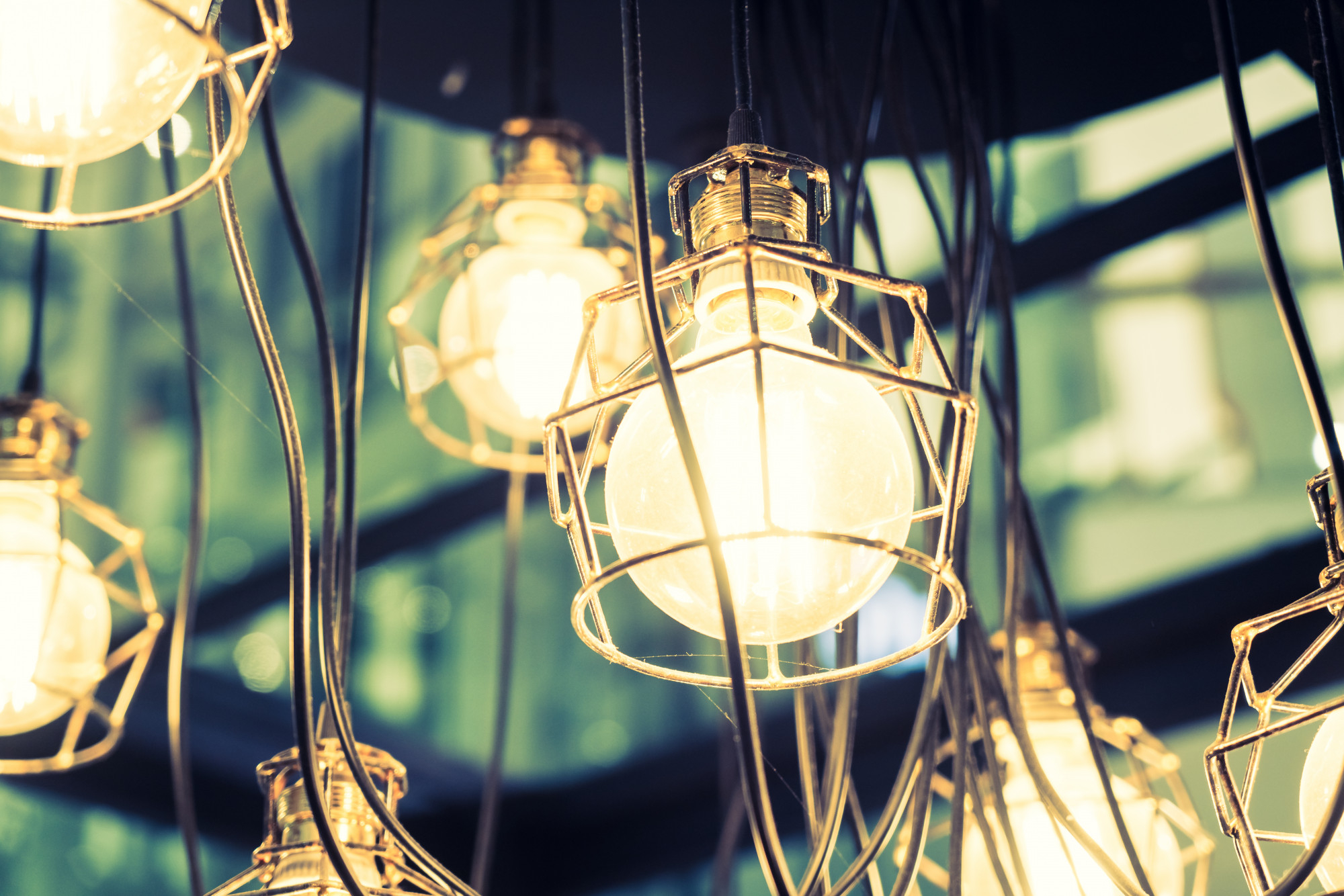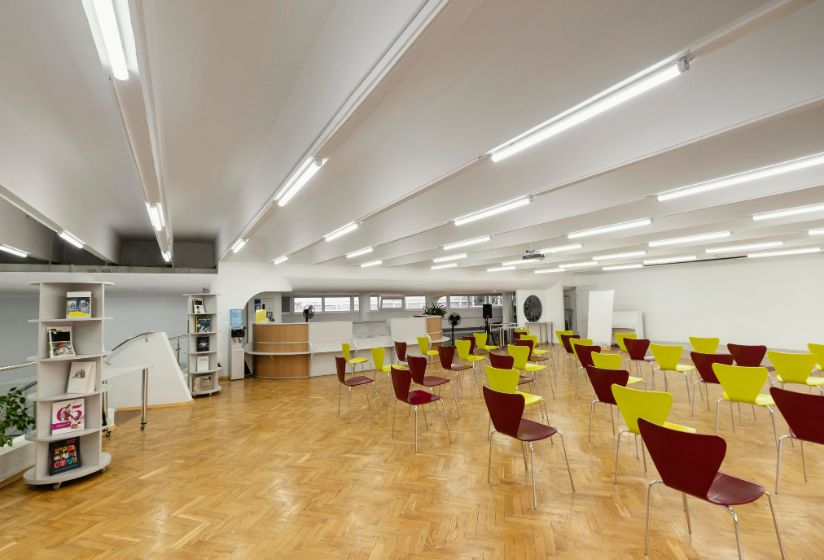LED vs Fluorescent vs Halogen: What’s Best for Your Property?
- Written By: marketinc ads
- June 4, 2025

Picking the best lighting system for a commercial property requires looking at more than just how it looks. This impacts the amount of energy used, how often the area needs upkeep, and productivity in the workplace. This post aims to help you decide which of LED, fluorescent, and halogen lighting is best for you by comparing their advantages. Knowing the differences between them will improve long-term results, keep costs down, and better manage energy throughout your facility.
What Are LED Lights and How Do They Work?
Light Emitting Diodes, or LEDs, work by sending an electrical current through a semiconductor, which then gives off light through a process called electroluminescence. LEDs don’t require filaments or gases like regular incandescent or halogen lights do. This means they don’t give out much heat and are far more energy efficient. They are great for business use since they are small, durable, and last a long time. They also help keep expenses down by performing consistently and requiring less maintenance.
How Does Fluorescent Lighting Function?
Fluorescent lights function by sending an electric current through mercury vapor, which creates ultraviolet (UV) light. The UV radiation then makes the phosphor coating inside the tube glow, which makes visible light. Although fluorescent bulbs are more energy-efficient than incandescent bulbs, they are hazardous and may flicker or decline over time. Consequently, they necessitate more frequent maintenance and cautious disposal in commercial settings.
What Makes Halogen Lights Different?
Halogen bulbs are a kind of incandescent light that has halogen gas in it to make the filament last longer and work better. These bulbs give off a warm, bright light that looks a lot like natural daylight. This makes them great for accent lighting and displays in stores. Halogen lights, on the other hand, produce a lot of heat and use more energy. They are not good for continuous usage or large-scale installations since they have a high operating temperature and a limited lifetime.
Comparing Energy Efficiency Across Lighting Types
Why LEDs Lead in Energy Savings
LEDs use the least energy of any lighting system available now. Around 90% of the electricity used by LED lights is emitted as light, and little heat is generated. Because they need less energy, property owners save money with lower bills and help lessen harm to the environment. If a business, such as a warehouse or office building, operates around the clock, using LED lighting can save the company a good amount of money.
How Fluorescents Perform in Energy Usage
Fluorescent lights are better than halogens, but they are not as good as LEDs. They turn roughly 60% to 70% of the energy they take in into light. But this efficiency goes down with time, especially when you turn it on and off a lot. Despite their initial affordability, their long-term energy consumption may not align with cost-saving objectives, particularly in high-use environments.
Halogen Lighting’s High Energy Demand
Halogen lamps remain among the least energy-efficient alternatives. They squander a lot of energy as heat, thus, they aren’t good for situations where efficiency is important. Halogen systems use more power and cost more to cool down since they give out heat in large business buildings.
We specialize in delivering tailored electrical services to meet the unique needs of your business. From installations and energy-efficient upgrades to round-the-clock emergency repairs, our team ensures your operations stay uninterrupted.
Evaluating Lifespan and Maintenance
Long-Term Value of LED Lighting
The life of an LED light can range from 25,000 to 100,000 hours, depending on the type and how it is used. This longer life means that bulbs need to be replaced less often, which saves money on both materials and labor. The fact that they don’t need as much maintenance is a big plus for property managers and facility owners, especially when the installations are hard to reach or have high ceilings.
Fluorescent Light Durability
Fluorescent lights last a reasonable amount of time, usually between 7,000 and 15,000 hours. But with time, their performance might get worse, which can cause them to flicker or provide less light. Because of their fragile glass tubes and mercury content, maintenance workers must also be careful with them. They cost less at first, but they frequently need more service than LED systems.
Frequent Replacements with Halogens
Most halogen lamps survive just about 2,000 hours. Most businesses don’t think of them as a good long-term option because they don’t last long and require a lot of energy. Regular replacements add to maintenance costs and might cause problems with corporate operations.
Assessing Light Quality and Performance
Superior Output and Flexibility of LEDs
The light from LEDs looks natural and is measured with high Color Rendering Index (CRI) scores. So LEDs help colors look more like they should, whether in shops, display spaces, or at work. Bulbs come in a range of color temperatures, from warm to cool, which means you can create different settings and moods.
Performance Characteristics of Fluorescent Bulbs
Fluorescent lights usually spread light across a wide area, which makes them good for big, open spaces. But it often has problems like buzzing, flickering, and color output that isn’t always the same. Fluorescents that are old or not well cared for can break down rapidly, making them less useful and less appealing overall.
Visual Output of Halogen Fixtures
Halogens give forth a strong, concentrated light that shows colors quite well. This makes them good for spotlighting or places where seeing details is vital. But since they are so bright, they can induce glare, and their heat production can make them unpleasant in small or climate-controlled spaces.
Heat Output and Its Impact on Safety
Cooler Operation with LED Fixtures
LED lights are safer for enclosed or vulnerable environments, such as food storage, healthcare facilities, or manufacturing plants, due to their low heat generation. Their low working temperature also puts less stress on HVAC systems, which saves even more energy.
Moderate Heat from Fluorescents
Fluorescents give off more heat than LEDs, but not as much as halogens. They are usually harmless, but if you use a lot of them or in a place with bad air flow, they can still change the temperature of the room. Fluorescent lights don’t normally pose a safety risk because of the heat they give out, but they may affect how well your HVAC system works.
Excessive Heat Production in Halogen Systems
Halogen lights are particularly susceptible to fire hazards when they operate at an excessive temperature, particularly in older fixtures or when installed incorrectly. They are also inappropriate for areas with high occupant traffic or combustible materials due to their high surface temperatures.
Environmental Responsibility and Waste
LED Lighting and Sustainable Outcomes
LEDs are good for the environment since they don’t have any harmful chemicals in them. They can be recycled completely and help buildings get green building certifications like LEED. Their decreased power use also fits with aspirations for sustainability and reducing carbon emissions.
Environmental Hazards with Fluorescent Bulbs
Mercury, a poisonous substance that is bad for health and the environment, is found in fluorescent lamps. You need to be extra careful while throwing things out so they don’t get contaminated. A penalty or an increase in disposal costs may result from improper management.
Halogen Lighting and Environmental Drawbacks
Halogen lights don’t contain mercury, but they don’t work very well and don’t last very long, so they create more waste. They are increasingly being phased out in eco-conscious renovation projects due to their lack of alignment with contemporary sustainability practices.
Upfront Costs and Long-Term Value
Justifying the Higher Initial Cost of LEDs
LEDs may cost more at first, but the money you save over time is far more than the money you spent at first. Property owners who want to get the most value over time should buy them since they cut power bills, maintenance costs, and provide utility rebates.
Fluorescents as a Mid-Tier Investment
When it comes to budgetary considerations, fluorescents are a good compromise. They cost less than LEDs, but they are less efficient and last less long. They could be okay to use in temporary setups or when the budget is tight.
Halogen Lighting’s True Cost Over Time
Halogen lights are cheap to buy, but they cost more in the long run since they use a lot of energy and need to be replaced often. When looking at the expenses throughout the life of the product, halogens tend to rank the poorest of the three choices.
Application Suitability Based on Use Case
Best Lighting Choices for Office and Institutional Spaces
LED lights make it easier to see and focus in businesses, classrooms, and hospitals. Their glare-free light helps lessen eye strain and makes the workplace more pleasant, which boosts productivity.
Ideal Fixtures for Warehouses and Industrial Sites
LEDs are used in factories and other industrial settings because they are bright, dependable, and work well with automated systems like motion sensors. They can handle tough circumstances and give forth steady light over a wide region.
Role of Halogen and Fluorescent Lights in Retail and Display
People have used halogens in displays for a long time because they give forth warm, concentrated light. LED technology has, however, come a long way and now offers similar benefits with higher efficiency and less heat, making them a superior choice in contemporary retail settings.
Available Utility Rebates and Incentives
How LEDs Qualify for Energy Rebates
A lot of state and federal energy programs provide people with money to upgrade to LED lights. These incentives can pay for a large part of the installation expenses, which makes property owners more likely to convert to energy-efficient equipment.
Fluorescent and Halogen Incentive Limitations
Fluorescents and halogens don’t often qualify for energy-saving incentives since they are less efficient and bad for the environment. This makes them less appealing to property owners who want to lower their upfront expenditures through accessible programs.
How All Reach Lighting Supports Incentive Applications
At All Reach Lighting, we help our customers find rebate programs that are available, fill out the paperwork, and make sure their lighting projects satisfy the requirements for incentives. Our expertise makes it easier for clients to save money and make upgrades.
Conclusion
Choosing the correct lighting system is important for making the most of your energy, keeping expenses down, and keeping the space safe and productive. Fluorescent and halogen lights may still have certain uses, but LED lights are the best choice for modern homes since they are the most efficient and dependable. Buying LEDs is a good idea since they last a long time, work better, and meet today’s criteria for energy efficiency and sustainability.


